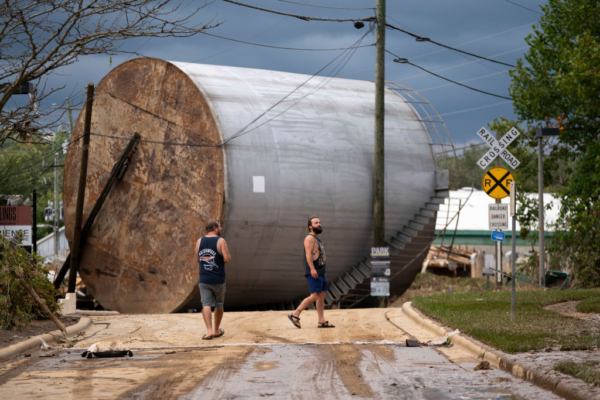On Thursday (September 26), Hurricane Helene made landfall in the southeastern United States, causing severe damage with at least 64 deaths and millions of people without power. The estimated economic losses from the hurricane are feared to reach billions of dollars, making it one of the most devastating storms in modern American history.
On Friday (27th), President Biden declared a state of emergency in Tennessee. Prior to that, Florida, South Carolina, North Carolina, and Virginia had already declared states of emergency.
By Saturday afternoon, at least 3 million users in five states were still without power, with authorities warning that it could take several days for services to be fully restored. South Carolina was hardest hit with over one million households and businesses without power, while Georgia had 750,000 households affected.
The National Hurricane Center announced that the storm has now become a Post Tropical Cyclone and is expected to linger over the Tennessee Valley region on Saturday and Sunday.
On Thursday night, the Category 4 Hurricane Helene struck the Big Bend area of Florida with winds reaching 140 mph.
In Georgia, Governor Brian Kemp surveyed the devastated homes and highways covered in debris from the air on Saturday (28th), saying it looked as if a bomb had exploded.
The weakened Helene then brought heavy rainfall to North Carolina and Tennessee, causing creeks and rivers to overflow and dams to be overwhelmed. Western North Carolina was cut off from the outside world due to landslides and flooding, forcing the closure of Interstate 40 and other roads.
Floods led to hundreds of water rescues, with the most notable being in rural Unicoi County, Eastern Tennessee, where dozens of patients and staff were lifted from hospital roofs by helicopters on Friday.
The storm triggered a rare century flooding in North Carolina. As of Saturday night, 10 residents had been confirmed dead due to Helene. Governor Roy Cooper stated that the catastrophic losses in the western part of the state were unprecedented.
In Atlanta, the rainfall reached 11.12 inches within 48 hours, the highest in the city’s recorded history since 1878.
At least 25 people died in South Carolina, making Helene the deadliest tropical storm in the state since Hurricane Hugo in 1989, which claimed 35 lives in northern Charleston. There were also death reports in Florida, Georgia, North Carolina, and Virginia.
Sheriff Bob Gualtieri confirmed that among the 11 deaths in Florida, 9 people drowned in their homes in mandatory evacuation areas along the Gulf Coast of Pinellas County.
According to Reuters, AccuWeather’s Chief Meteorologist, Jonathan Porter, estimated losses from the storm to be between $95 billion and $110 billion, potentially making it one of the costliest storms in modern American history.
President Biden remarked on Saturday that the situation with Helene was “overwhelming” and pledged assistance. He also approved a disaster declaration for North Carolina, providing federal funding for those affected.
Hurricane Helene made landfall near the mouth of the Aucilla River in Taylor County, approximately 20 miles northwest of where Hurricane Idalia hit last year with similar intensity.
Taylor County, located in the Big Bend area of Florida, had never been directly hit by a hurricane in years past. However, following Hurricane Idalia and two other storms in the past year, the region has now become a veritable hurricane highway.
Helene is the eighth named storm of the Atlantic hurricane season that began on June 1. The National Oceanic and Atmospheric Administration predicts that this year’s hurricane season will surpass average levels due to record-warm ocean temperatures.
(This article references reports from the Associated Press and Reuters.)

